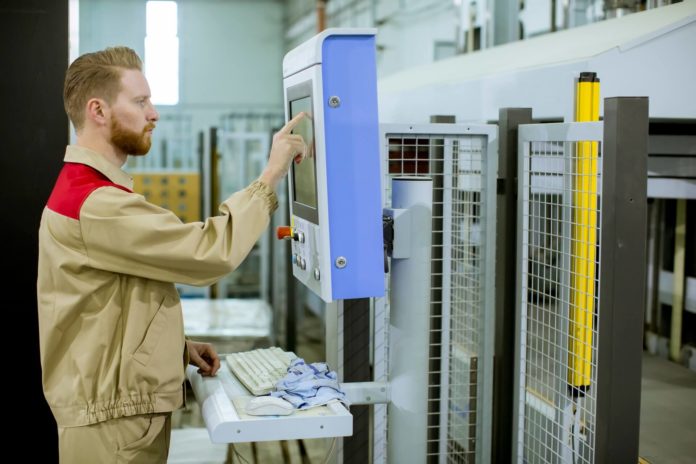Today’s manufacturing companies find it nearly impossible to find and hire qualified CNC operators. Indeed, most find it difficult to find people that have any shop experience at all. Instead, they must hire people who simply show an interest in and (hopefully) have aptitude for manufacturing – and train them from scratch.
Given this, there are five subjects that would-be CNC machinists must understand before they can spend meaningful time on a specific CNC machine tool.
1. Shop safety
First and foremost, newcomers to manufacturing must understand that the shop floor is a dangerous place. You must convey general concerns in two areas: safety equipment that workers use and safety practices to which they must adhere. Also include any unique safety issues with which your company contends.
2. Shop math
The arithmetic that a typical CNC operator must be able to perform is simple. However, you must ensure that newcomers can use a calculator to add, subtract, multiply and divide. CNC operators must be able to repeatedly perform simple calculations without making any mistakes. In addition, be sure your people can communicate values properly, down to ten-thousandths of an inch and/or microns. Include the concept of negative values because adjustments CNC operators make always include a polarity.
3. Blueprint reading
Anyone working with CNC machines must be able to interpret a 3D workpiece from a series of 2D views on an engineering drawing. This involves understanding line types (visible, hidden, center, section, etc.) and orthographic projection. Fortunately, CNC operators will have a finished workpiece (machined during setup) for reference and comparison. Operators must also be able to interpret dimensions to judge the size of each workpiece attribute.
4. Tolerance interpretation
Newcomers must understand that every workpiece attribute has an amount of allowable error, whether it be specified or implied. The kind of tolerance that is of most concern to CNC operators is the dimensional tolerance. Attributes with type of tolerance can be easily adjusted.
Point out that dimensional tolerances can be specified in three ways:
1) plus or minus a value,
2) high and low limit,
3) plus one value and minus another.
Concentrate on the methods used in your company. Be sure your new CNC operators can determine high and low limits and the mean value for those tolerancing methods your company uses. CNC operators must also know the value you expect them to target when adjustments are required, which is often the mean value.
Ensure that people understand that whenever they take a measurement, there will always be four possibilities:
1) the attribute is well between the high and low limit (acceptable, nothing must be done),
2) the attribute is below the low limit (currently scrap, adjustment is necessary),
3) the attribute is above the high limit (currently scrap, adjustment is necessary),
4) the attribute has grown or shrunk dangerously close to a high or low limit, probably due to tool wear (currently acceptable, but an adjustment is necessary).
In one of the two cases when the attribute is currently scrap, it will be possible to “save” the workpiece by removing more material.
Test arithmetic skills by providing a lot of examples and practice. Ask your new CNC operators to determine whether a measured attribute is within the tolerance band. If it is not, ask them to determine the amount and polarity of the required adjustment.
Newcomers should also be exposed to geometric tolerances, but let them know that workpiece attributes with these tolerances are not as easily manipulated as those with dimensional tolerances.
5. Measuring devices
Explain the two basic types: fixed and variable gages.
Go into detail for any fixed gages your CNC operators use, including go/no-go gages and gages that incorporate a dial indicator. These gages are used to measure but one workpiece attribute. If your company incorporates different types dial indicators in your fixed gages, be sure to explain the increment value for the dial (0.001, 0.0005, 0.0001 inch, etc.).
Be sure people understand the variable gages they will be using. Most common are micrometers and calipers, but again, make sure you include any others your company uses. Most gages, and especially variable gages, require practice to master. In addition, there is a certain feel, bordering on intuition, that is required to ensure good readings. Be sure to provide a lot of practice.
With these five topics understood, newcomers will be able to take measurements and determine whether the measured attribute is within its tolerance band.
If it is not, they will be able to determine whether the workpiece can still be saved by removing more material.
They also will be able to determine the adjustment amount (value and polarity) that will bring the workpiece attribute back to its target value. These skills are essential for anyone running a CNC machine.

















































